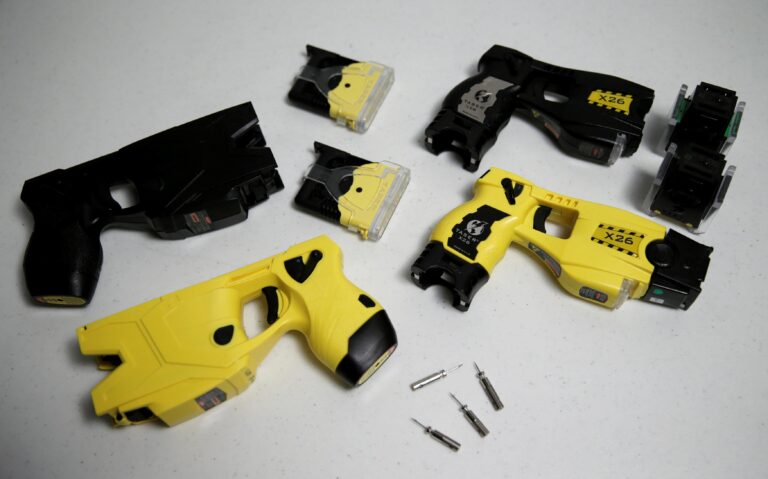Table of Contents
- Common Electrical Issues That Lead to Stun Gun Malfunctions
- Environmental Factors Affecting Stun Gun Performance and Safety
- Material Quality and Internal Component Failures
- Best Practices to Prevent Short Circuits and Maintain Device Reliability
- In Conclusion
Common Electrical Issues That Lead to Stun Gun Malfunctions
One frequent culprit behind stun gun malfunctions is improper wiring or damaged internal components. Over time, exposure to moisture or drops can cause corrosion or loosen connections inside the device, leading to short circuits. Additionally, poor manufacturing quality or substandard materials in some models contribute to fragile circuits that fail under stress. In particular, the battery terminals and the high-voltage transformer are prone to wear, creating intermittent shorts that disrupt performance.
External factors also play a significant role in causing electrical issues. Common problems include:
- Accumulation of dirt and debris on the electrodes, which reduces conductivity and may cause sparks to short unpredictably.
- Using incompatible or expired batteries, which can deliver unstable voltage outputs, stressing the circuit.
- Overheating due to extended use or insufficient cooling breaks, leading to damaged insulation and internal shorts.
Understanding these typical pitfalls helps users maintain their stun guns properly and avoid issues that lead to short circuits.
Environmental Factors Affecting Stun Gun Performance and Safety
Several external elements can heavily influence both the efficiency and safety of stun guns. High humidity and wet conditions, for example, increase the likelihood of moisture seeping into the device, causing internal circuitry to short out. Similarly, exposure to extreme temperatures-whether scorching heat or freezing cold-can compromise the battery’s integrity, reducing its charge capacity and potentially causing malfunctions. Even dust and dirt accumulation around the electrodes can create unintended pathways for electrical discharge, leading to performance inconsistencies or dangerous shorts during use.
Moreover, electromagnetic interference (EMI) from nearby electronic devices or powerful radio waves can disrupt the stun gun’s control circuits, sometimes triggering erratic behavior or failure. It’s also crucial to consider how physical impacts-such as drops or rough handling-can damage internal components, often manifesting as shorts later on. To mitigate these risks, users should:
- Keep their stun gun dry and stored in moisture-resistant cases.
- Avoid exposing it to extreme temperature fluctuations.
- Regularly clean electrodes and inspection ports.
- Store away from strong EMI sources like radio towers and high-powered machinery.
- Handle with care to prevent internal damage.
Material Quality and Internal Component Failures
When stun guns are constructed from subpar materials, their longevity and reliability significantly decline. Inferior metals and plastics are prone to wear and corrosion, especially under exposure to moisture or temperature fluctuations. Over time, these materials can crack, warp, or degrade internally, leading to unexpected failures. High-quality components such as military-grade switches, reinforced circuits, and weather-resistant casings help ensure that the device maintains integrity during use and storage, reducing the chance of electrical shorts and malfunctions.
Additionally, internal component failures often stem from manufacturing defects or poor assembly practices. Common issues include:
- Faulty soldering joints causing intermittent or continuous connectivity problems.
- Improper insulation leading to unintended contact between wires or circuit boards.
- Weak internal connectors that may loosen under vibration or impact.
- Battery compartment flaws resulting in leakage or inconsistent power supply.
Such vulnerabilities can cause the stun gun’s circuitry to short circuit, reducing its effectiveness and potentially rendering it unsafe. Ensuring rigorous quality control and utilizing premium internal parts are critical steps manufacturers must take to prevent these failures and offer a dependable self-defense tool.
Best Practices to Prevent Short Circuits and Maintain Device Reliability
Proper care and handling are essential to avoid short circuits in stun guns, which can severely compromise their performance and lifespan. Always ensure the device is stored in a dry, cool place to prevent moisture buildup, one of the most common culprits behind electrical shorts. Regularly inspect the stun gun’s cables and connectors for any signs of wear, corrosion, or damage. Replacing frayed wires immediately can prevent accidental shorts and maintain consistent functionality.
- Keep contacts clean: Dirt and oxidation on electrode tips can cause erratic discharges and create pathways for shorts.
- Avoid overcharging: Excess charging strains the battery and internal circuits, increasing short circuit risk.
- Use manufacturer-approved accessories: Non-standard chargers or parts may introduce improper voltage or current.
Furthermore, practicing proper usage habits significantly enhances the stun gun’s reliability. Never expose the device to extreme physical shocks or continuous high-voltage discharge cycles beyond recommended limits. Preventing moisture infiltration by sealing all ports and disconnecting the battery before cleaning helps maintain internal integrity. When not in use, keeping the stun gun switched off reduces unnecessary electrical stress and preserves internal components.
- Perform routine maintenance: Schedule periodic professional checkups to identify early signs of wear.
- Store properly: Use protective cases designed to prevent impact and environmental damage.
- Follow user manuals: Adhering closely to manufacturer instructions ensures safe and optimal operation.
In Conclusion
In conclusion, understanding the key factors that cause stun guns to short circuit is essential for both users and manufacturers aiming to ensure safety and reliability. From moisture intrusion and battery issues to manufacturing defects and improper maintenance, several elements can compromise the functionality of these devices. By recognizing these potential pitfalls and taking proactive measures, you can help extend the lifespan of your stun gun and maintain its effectiveness when it matters most. Stay informed, stay safe, and always handle your stun gun with the care it deserves.Check Our Other Blogs
- StunGun – Your Trusted Source for Stun Guns, Laws, and Self-Defense Tips
- PepperSprayLaws – Your Trusted Resource for Pepper Spray Information
- StunGunLaws – Your Trusted Guide to Stun Gun Legality and Safety





